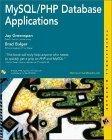Question
Write a program in Smalltalk or Elixir or Huskel or Rust that deals and evaluates two five-card poker hands and chooses a winner.The input to
Write a program in Smalltalk or Elixir or Huskel or Rust that deals and evaluates two five-card poker hands and chooses a winner.The input to your program is the first ten values in a permutation of the integers 1-52 that represents a shuffling of a standard deck of cards. The order of suits in an unshuffled deck are Clubs, Diamonds, Hearts, Spades. Within each suit, the ranks are ordered from Ace, 2- 10, Jack, Queen, King. The table below shows all 52 cards and their respective indices.
Thus, an input array that started with the integers [38, 48, 11, 6, ] would represent Queen of Hearts, 9 of Spades, Jack of Clubs, 6 of Clubs, and so on. Your program will accept this permutation array as input and use it to deal two poker hands of 5 cards each in an alternating fashion. I.e., the first card goes to hand 1, the second card goes to hand 2, the third card goes to hand 1, fourth to hand 2, etc. until each hand has 5 cards. Once dealt, your program will analyze each hand according to the rules of poker(regular poker rules )and decide the winner. Tie Breaking There will be no ties. If both hands have the same type, we will implement tie-breaking based on the ranks of the cards. For example, if both hands are a flush, then the hand with the card of highest rank is declared the winner. If both hands have a pair, then the hand whose pair is higher wins. For example, a pair of Kings beats a pair of Sevens. If both hands have the same pair, i.e. each hand has a pair of threes, then the hand with the next highest card wins. If both hands have the same pair, and the same high card, we check the 2nd highest card. And so on, and so forth. If, after comparing hands and ranks, it turns out that the hands are identical, we move on to tie-breaking by suit. If both hands have a pair of threes, and all other cards are of the same rank, then the hand with the three of spades will win. Keep in mind that tie-breaking based on the suit only comes into effect when tie-breaking based on rank is impossible. Suits are ranked from lowest to highest in the following order: Clubs < Diamonds < Hearts < Spades.
| 1 | 2 | 3 | 4 | 5 | 6 | 7 | 8 | 9 | 10 | 11 | 12 | 13 | |
| Clubs | Ace | 2 | 3 | 4 | 5 | 6 | 7 | 8 | 9 | 10 | Jack | Queen | King |
| 14 | 15 | 16 | 17 | 18 | 19 | 20 | 21 | 22 | 23 | 24 | 25 | 26 | |
| Diamonds | Ace | 2 | 3 | 4 | 5 | 6 | 7 | 8 | 9 | 10 | Jack | Queen | King |
| 27 | 28 | 29 | 30 | 31 | 32 | 33 | 34 | 35 | 36 | 37 | 38 | 39 | |
| Hearts | Ace | 2 | 3 | 4 | 5 | 6 | 7 | 8 | 9 | 10 | Jack | Queen | King |
| 40 | 41 | 42 | 43 | 44 | 45 | 46 | 47 | 48 | 49 | 50 | 51 | 52 | |
| Spades | Ace | 2 | 3 | 4 | 5 | 6 | 7 | 8 | 9 | 10 | Jack | Queen | King |
For all languages, your program will be driven at the top level by a function/method called deal that accepts the permutation array described above as input. This function will return the winning hand based on the format described for each language below. Anything else you do inside this deal function is completely up to you. create a class called Poker, with an instance method called deal: that accepts a simple integer array as input and returns the winning hand. Its usage will be as follows: | deck winner | deck:= Poker new. winner := deck deal: #(1 2 3 4 5 6 7 8 9 10). Sample shuffling Transcript show: winner; cr. The winning hand will be returned as a sorted array of strings where each element is a concatenation of the rank and the suit. The suit must be capitalized. Face cards are represented numerically. 11=Jack, 12=Queen, 13=King. An Ace is represented numerically as 1. The winning hand from the above example would be returned as follows: #(1C 3C 5C 7C 9C).
Step by Step Solution
There are 3 Steps involved in it
Step: 1

Get Instant Access to Expert-Tailored Solutions
See step-by-step solutions with expert insights and AI powered tools for academic success
Step: 2

Step: 3

Ace Your Homework with AI
Get the answers you need in no time with our AI-driven, step-by-step assistance
Get Started


